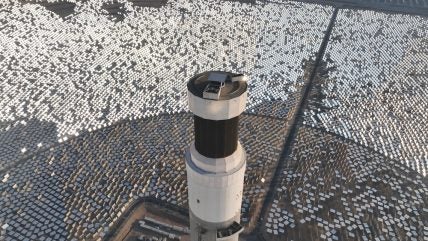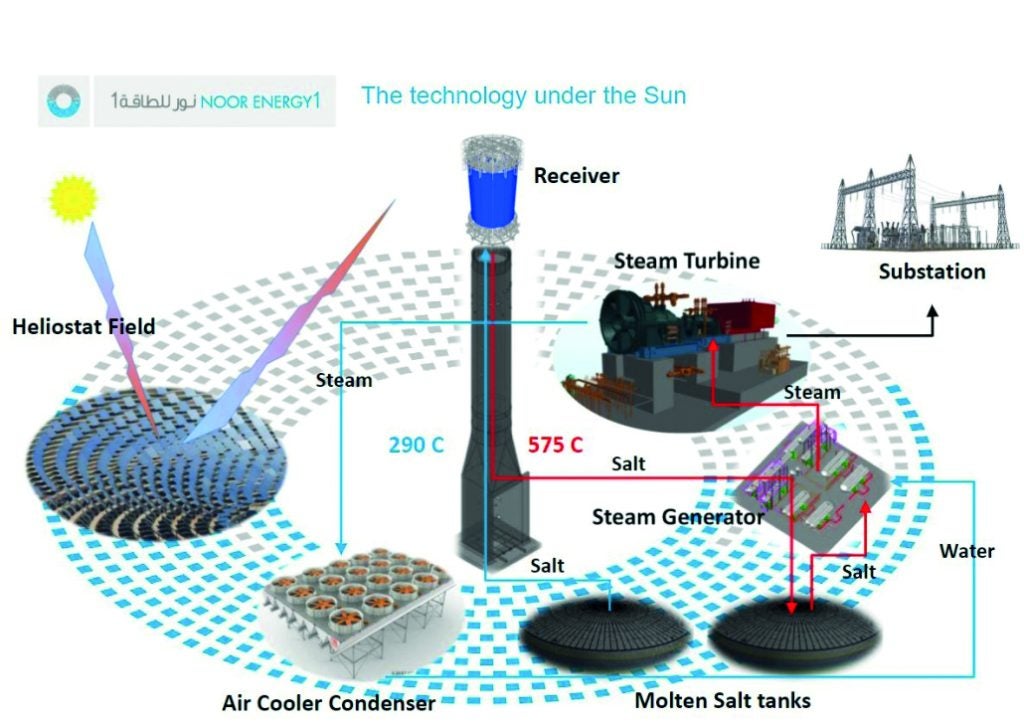
The facility has a world-leading thermal energy storage capacity of 5908 MWht, providing 15 consecutive hours of energy storage, essentially meaning that the power plant can provide 100 MW of solar generated electricity 24/7.
“A giant interlacing of pipes, tanks and heat exchangers”, is how John Cockerill describes the molten-salt receiver, which weighs 1500 tons and is itself about 40 meters high.
The MSR contains over 1000 thin tubes that enable the transfer of solar heat to the molten-salt working fluid (nitrate based). John Cockerill says the molten-salt receiver is currently steadily absorbing 600 MWt of solar power, which was a contractual performance target, and achieves peaks above 630 MWt.
The ‘cold’ salt is held in a storage tank at around 300°C. The receiver’s circulation pump takes the salts from the cold salt storage tank to the receiver.

At the receiver outlet, the hot salts (at around 565°C) enter the outlet tank, which acts as a buffer.
From the receiver’s outlet tank, the hot salts descend from the tower to the hot salt tank, where they are stored.
From this tank, the circulation pump provides the flow required for steam generation, via a group of salt/water-steam heat exchangers.
John Cockerill signed a contract in 2018 with Shanghai Electric/Brightsource Solar Energy for design and supply of the molten-salt receiver. Project investors include Dubai Electricity and Water Authority (DEWA), Silk Road Fund, and ACWA Power.
The facility employs around 70 000 wirelessly operated heliostats.


